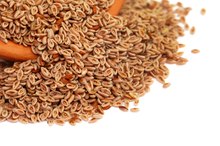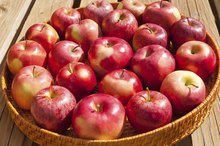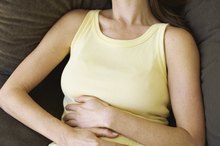Oatmeal & Digestion
Oatmeal is a healthy breakfast food that is high in fiber. While fiber can promote good digestive health, it can also cause gas and bloating in people who are not used to a low-fiber diet or those who eat large quantities of fiber in a short period. Start with a small amount of oatmeal and work your way up to a full serving if you find that eating oatmeal tends to give you digestion problems.
Fiber
There are two types of fiber -- soluble and insoluble -- and they both promote a healthy gastrointestinal tract. Soluble fiber creates a gel when it comes into contact with water. This gel slows down absorption of nutrients in the intestines. The fiber in oatmeal is mostly soluble. Insoluble fiber, found in wheat bran, whole grains and vegetables, is not digested, but pushes food through the colon and adds bulk to stool.
- There are two types of fiber -- soluble and insoluble -- and they both promote a healthy gastrointestinal tract.
- This gel slows down absorption of nutrients in the intestines.
Digestive Side Effects
Diverticulitis & Colonoscopy
Learn More
Large amounts of fiber can cause abdominal cramping, gas, bloating, diarrhea and pain. The sensation can be quite uncomfortable; however, it eventually goes away, as you become accustomed to eating more fiber. Too much fiber, however, can interfere with the body's uptake of minerals, including zinc, iron, calcium and magnesium, states Medline Plus. Yet, high-fiber foods often have a high mineral content which ensures that high amounts of fiber will not cause a mineral deficiency.
- Large amounts of fiber can cause abdominal cramping, gas, bloating, diarrhea and pain.
- Too much fiber, however, can interfere with the body's uptake of minerals, including zinc, iron, calcium and magnesium, states Medline Plus.
Diverticulitis
Diverticulitis occurs when diverticulosis or small pouches form in the intestinal lining and become inflamed. While a low-fiber diet may be the cause of diverticulosis formation, high-fiber foods such as peas, beans, coarse grains, corn, dried fruits, pickles and cucumbers can all make diverticulitis symptoms worse. These symptoms include abdominal bloating and left side soreness, fever and chills, nausea, vomiting and unwillingness to eat. A liquid diet and then, reintroduction of soft foods after a few days, eases the symptoms.
- Diverticulitis occurs when diverticulosis or small pouches form in the intestinal lining and become inflamed.
Diabetes
Is It Okay to Eat Ground Flax Meal With Diverticulosis?
Learn More
Diabetes is a group of conditions where the body cannot either make or use insulin, a hormone that controls blood sugar levels. Prolonged elevated blood sugar levels and high cholesterol can lead to health complications. Fiber may reduce high cholesterol levels that can lead to heart disease. Soluble fiber gel slows down the absorption of carbohydrates, leading to a slower rise in blood sugar levels.
- Diabetes is a group of conditions where the body cannot either make or use insulin, a hormone that controls blood sugar levels.
- Fiber may reduce high cholesterol levels that can lead to heart disease.
Related Articles
References
- Medline Plus: Fiber
- Medline Plus: Diverticulitis
- American Diabetes Association: Diabetes Basics
- Dietary Fiber. MedlinePlus. March 2015.
- Fiber. MedlinePlus. October 2019.
- Natalie Dilate Muth, M.D., M.P.H., R.D. Basic Nutrition, and Digestion. American Council on Exercise Health Coach Manual. 2013.
Writer Bio
Mary McNally has been writing and editing for over 13 years, including publications at Cornell University Press, Larson Publications and College Athletic Magazines. McNally also wrote and edited career and computer materials for Stanford University and Ithaca College. She holds a master's degree in career development from John F. Kennedy University and a bachelor's degree from Cornell University in counseling.









